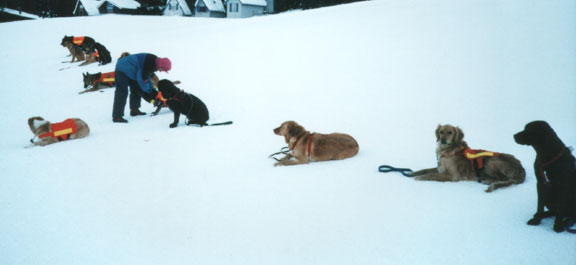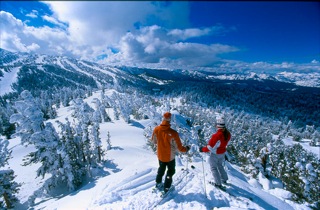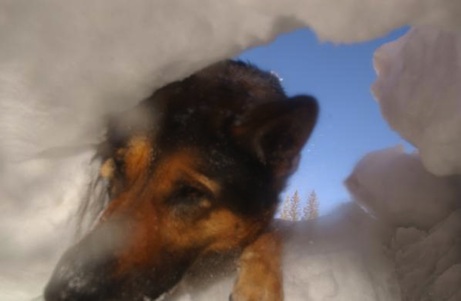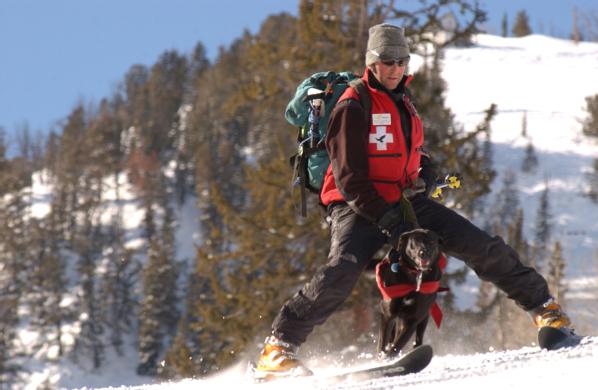|
Training the Avalanche Search and Rescue K9
In the United States alone, there are about 20 deaths each year due to avalanches. These occur when a slab of snow breaks off and moves down a slope. They can be triggered by slope, weather conditions, snow, or even human impact. The best way to avoid being caught is to be aware of your surroundings. Avoid steep slopes, especially after a heavy snowfall. A trained Search and Rescue K9 can become a great asset to locating a buried victim in the snow. Once the avalanche occurs, there is no way for a human to visually see the person who is buried. We can use the dog's nose to find the scent pool that rises from the snow at the location where the victim is buried. An experienced K9 will locate the scent, and dig down in the snow if the scent becomes stronger. If the scent is weaker, he will recognize this and continue following the scent until he finds the source. Over 95% of victims are alive the first 15 minutes of being buried, but the survival rate falls to just 30% after 30 minutes. This is why it is so important to find the victim as quickly as possible.

Photo Courtesy of Comdens.com
One Search and Rescue K9 can be as efficient as 20-30 human searchers. Perhaps this is why we are so dependent on our four legged search partners. Training Your K9 for Avalanche Search and Rescue Just like the Wilderness Air Scent K9, you want your dog to be excited and driven to find the subject. Whatever drives your dog (toy or treat), decide which reward system you will use. Training starts out with a simple "Runaway". The handler will hold the dog while a helper hides into a trench, so they are out of your dog's site. This will teach the dog to follow the scent trail, and look for the subject below the snow. Always start out with an easy problem to prevent frustration from your dog. Be aware of wind direction and other obstacles which could cause a distraction. As the helper is running to the trench, he will be teasing the dog with a treat or toy in hand. Once the helper is inside the trench, you will let your dog off leash, giving him the "Go Find" or "Search" command. When the dog finds the helper, he should immediately be rewarded.
Photo courtesy of FEMA. Photographer Andrea Booher
After your dog successfully completes this basic skill, the problems should be longer and more challenging. Burying multiple subjects, adding longer problems, and more distractions will make for more realistic conditions. Your dog should become acclimated to snowmobiles, probing sticks and multiple people working. Things that can be expected in real search situations. Recognizing The Alert It's the dog's job to find the scent, but it's your job to recognize when he alerts you of the victim. This can be easy if your dog is highly motivated and begins to dig after finding the area of scent where the victim is buried, but depending on scent or wind direction, the alert may not be so obvious. Training in different weather and terrain situations will help you learn how your dog works, and how to read his body language.
Photo Courtesy of 1st Special Response Group
The Rescue You've recognized your dog's alert. He's committed to digging in a particular spot, and it's clear to you he has a positive find. If there are enough rescuers, they most likely will help dig to find the victim. You may probe the area to begin with to determine the exact location of the victim. It is important to note that during a training, you should NOT use a probe as the risk of injury is too high. Depending on the amount of time that has passed, the chance of the rescue becoming a recovery is extremely high, especially after the first 20 minutes.
Photo Courtesy of FEMA.
Training Safety
|




